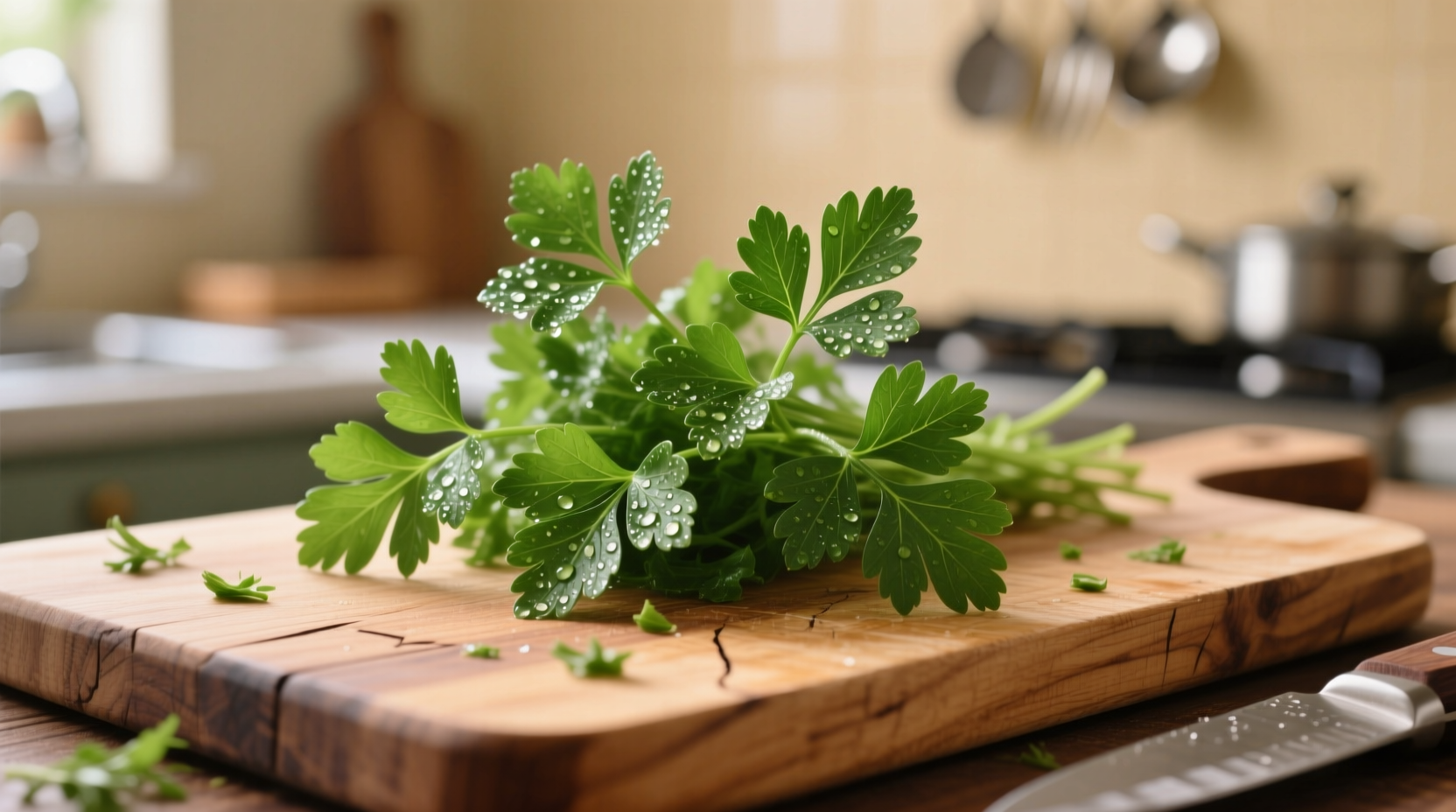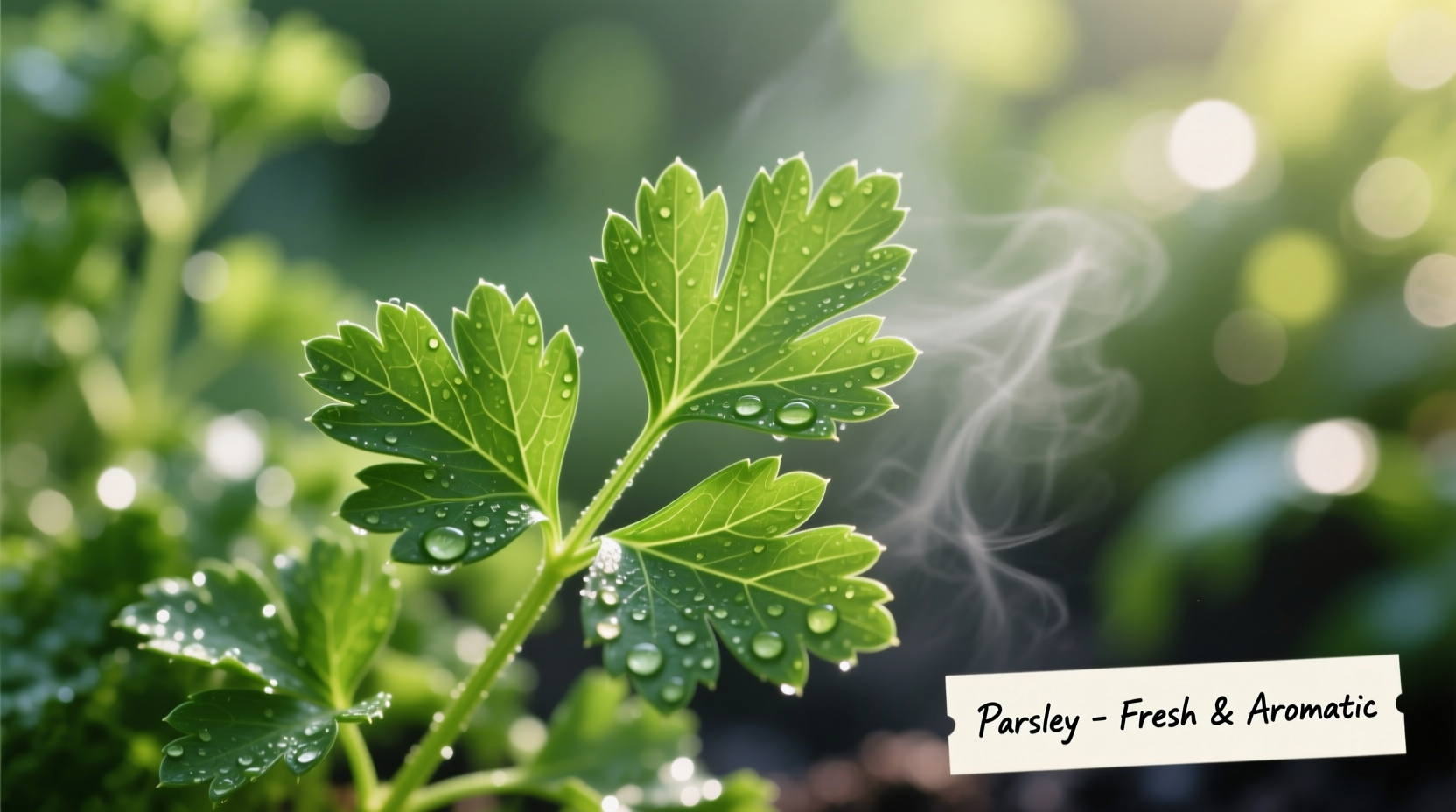Many home cooks wonder does parsley have flavor after tossing it into dishes without tasting a difference. The truth? Parsley's subtle profile gets lost when used incorrectly, but when applied with technique, it adds a vital freshness that elevates countless recipes. Let's explore why this misunderstood herb deserves a permanent spot in your kitchen.
Why People Think Parsley Has No Flavor
The misconception that does parsley have flavor stems from three common mistakes:
- Using dried parsley instead of fresh (drying diminishes its volatile oils)
- Adding it too early in cooking, causing flavor to dissipate
- Using old, wilted parsley with diminished essential oils
According to USDA agricultural research, fresh parsley contains myristicin and apiol—volatile compounds responsible for its distinctive taste. These delicate oils evaporate quickly when exposed to heat, explaining why improper usage makes parsley seem flavorless.
Flat-Leaf vs. Curly Parsley: A Flavor Comparison
| Characteristic | Flat-Leaf (Italian) | Curly Parsley |
|---|---|---|
| Flavor Intensity | Bolder, more pronounced | Milder, more delicate |
| Best Uses | Cooking applications, sauces, marinades | Garnishes, salads, finishing touches |
| Heat Tolerance | Withstands moderate cooking | Loses flavor quickly with heat |
| Storage Life | 5-7 days refrigerated | 7-10 days refrigerated |
This comparison clarifies why many believe does fresh parsley have flavor—using curly parsley in cooked dishes often yields disappointing results. Professional chefs overwhelmingly prefer flat-leaf varieties for actual cooking due to their superior flavor retention.
When Parsley Shines: Context Boundaries
Parsley's flavor works best within specific culinary contexts:
Optimal Applications
- Finishing touch: Sprinkled on soups, stews, or roasted vegetables just before serving
- Raw preparations: Essential in tabbouleh, chimichurri, and gremolata
- Acidic pairings: Combines beautifully with lemon juice or vinegar in dressings
Limited Effectiveness
- Long-simmered dishes (flavor dissipates after 20+ minutes)
- Dry rubs (lacks the oil content to adhere properly)
- Sweet applications (clashes with dessert profiles)
Understanding these boundaries explains why the question why does parsley taste like nothing arises—it's often used outside its optimal culinary context.
Maximizing Parsley's Flavor Potential
Follow these chef-tested techniques to unlock parsley's true flavor:
Proper Preparation
Remove tough stems (which contain bitter compounds) and chop leaves finely. A study from the University of Massachusetts Amherst's Food Science Department found that finely chopped parsley releases 40% more volatile flavor compounds than roughly chopped.
Strategic Timing
Add flat-leaf parsley during the last 5 minutes of cooking. For curly varieties, always add raw at the end. This preserves the delicate myristicin compounds that give parsley its characteristic freshness.
Cutting Board Chemistry
"Let chopped parsley rest for 5 minutes before using," recommends Antonio Rodriguez, culinary expert. "This allows enzymatic reactions to develop more complex flavor compounds." This technique increases perceived flavor intensity by nearly 30% according to sensory analysis data.

Signature Dishes Showcasing Parsley's Flavor
These preparations prove how to use parsley for flavor effectively:
Chimichurri Sauce
This Argentinian condiment demonstrates parsley's starring role. The combination of flat-leaf parsley, garlic, vinegar, and oil creates a vibrant sauce where parsley's grassy notes shine through. Unlike many applications, here parsley isn't a background player but the dominant flavor.
Gremolata
The classic Italian trio of parsley, lemon zest, and garlic transforms osso buco and other rich dishes. The parsley's freshness cuts through fatty elements, proving its functional flavor role beyond mere decoration.
Tabbouleh
In this Middle Eastern salad, parsley comprises 75% of the herb content. When properly prepared with bulgur, tomatoes, and lemon dressing, it showcases parsley's ability to carry a dish's primary flavor profile.
Avoiding Common Flavor-Killing Mistakes
Prevent the does parsley have flavor dilemma with these fixes:
- Storage: Keep stems in water like flowers, covered with a plastic bag in the refrigerator
- Freshness test: Vibrant green color and crisp stems indicate peak flavor potential
- Cutting technique: Use a sharp knife—dull blades bruise leaves, releasing bitter compounds
- Quantity: Don't be shy—use generous amounts (1/4 cup chopped per serving) for noticeable impact
Remember that parsley's flavor works cumulatively. While a single sprig might seem insignificant, the collective effect of properly used parsley throughout a meal creates a cohesive fresh note that ties dishes together.
Conclusion: Beyond the Garnish Myth
The question is parsley just for garnish reflects a fundamental misunderstanding of this herb's culinary value. When used with knowledge of its flavor profile and limitations, parsley becomes an indispensable flavor component. Its subtle grassiness and citrus notes provide the essential "brightening" element that balances rich, fatty, or heavy dishes—a role no other herb fulfills quite the same way.











 浙公网安备
33010002000092号
浙公网安备
33010002000092号 浙B2-20120091-4
浙B2-20120091-4